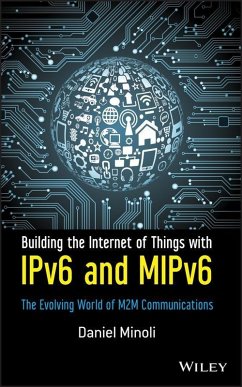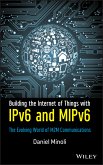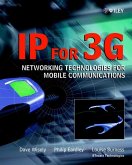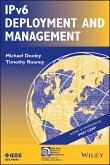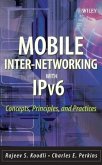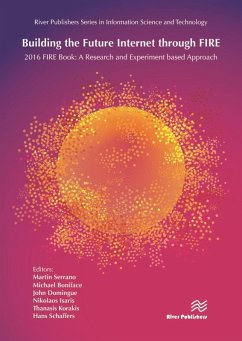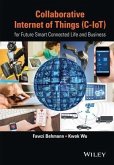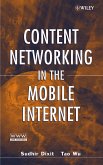"If we had computers that knew everything there was to know about things¿using data they gathered without any help from us¿we would be able to track and count everything, and greatly reduce waste, loss, and cost. We would know when things needed replacing, repairing or recalling, and whether they were fresh or past their best. The Internet of Things has the potential to change the world, just as the Internet did. Maybe even more so."
¿Kevin Ashton, originator of the term, Internet of Things
An examination of the concept and unimagined potential unleashed by the Internet of Things (IoT) with IPv6 and MIPv6
What is the Internet of Things? How can it help my organization? What is the cost of deploying such a system? What are the security implications? Building the Internet of Things with IPv6 and MIPv6: The Evolving World of M2M Communications answers these questions and many more.
This essential book explains the concept and potential that the IoT presents, from mobile applications that allow home appliances to be programmed remotely, to solutions in manufacturing and energy conservation. It features a tutorial for implementing the IoT using IPv6 and Mobile IPv6 and offers complete chapter coverage that explains:
Easily accessible, applicable, and not overly technical, Building the Internet of Things with IPv6 and MIPv6 is an important resource for Internet and ISP providers, telecommunications companies, wireless providers, logistics professionals, and engineers in equipment development, as well as graduate students in computer science and computer engineering courses.
Hinweis: Dieser Artikel kann nur an eine deutsche Lieferadresse ausgeliefert werden.
¿Kevin Ashton, originator of the term, Internet of Things
An examination of the concept and unimagined potential unleashed by the Internet of Things (IoT) with IPv6 and MIPv6
What is the Internet of Things? How can it help my organization? What is the cost of deploying such a system? What are the security implications? Building the Internet of Things with IPv6 and MIPv6: The Evolving World of M2M Communications answers these questions and many more.
This essential book explains the concept and potential that the IoT presents, from mobile applications that allow home appliances to be programmed remotely, to solutions in manufacturing and energy conservation. It features a tutorial for implementing the IoT using IPv6 and Mobile IPv6 and offers complete chapter coverage that explains:
- What is the Internet of Things?
- Internet of Things definitions and frameworks
- Internet of Things application examples
- Fundamental IoT mechanisms and key technologies
- Evolving IoT standards
- Layer 1/2 connectivity: wireless technologies for the IoT
- Layer 3 connectivity: IPv6 technologies for the IoT
- IPv6 over low power WPAN (6lowpan)
Easily accessible, applicable, and not overly technical, Building the Internet of Things with IPv6 and MIPv6 is an important resource for Internet and ISP providers, telecommunications companies, wireless providers, logistics professionals, and engineers in equipment development, as well as graduate students in computer science and computer engineering courses.
Dieser Download kann aus rechtlichen Gründen nur mit Rechnungsadresse in D ausgeliefert werden.
Hinweis: Dieser Artikel kann nur an eine deutsche Lieferadresse ausgeliefert werden.

